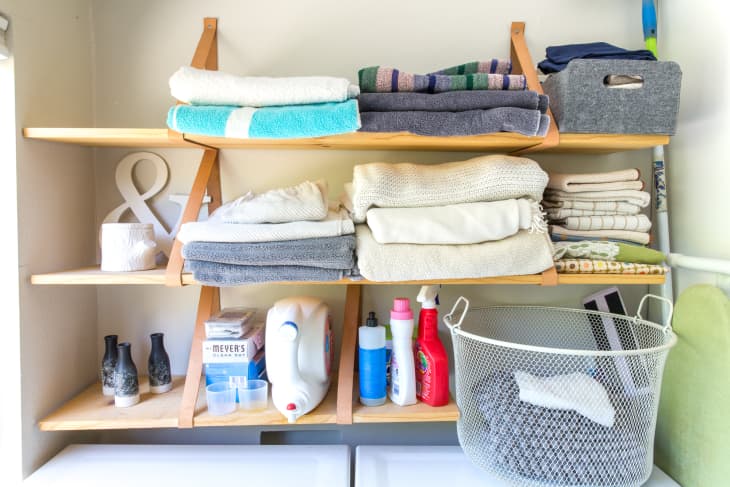5 (Way Too Common) Mistakes You Might Make with Bleach

Bleach is a strong cleanser that, when used properly, can be a safe and effective option for sanitizing various objects and surfaces in your kitchen, in the laundry and around your house. “But it’s not an all-purpose cleaner,” says Nancy Boc, senior vice president of education at the American Cleaning Institute.
Here are five things you should never clean or do with bleach:
1. Don’t use it on wooden surfaces.
While bleach is a good option in bathrooms, Bock says it is not effective at removing and killing mold on wood or wood-based materials such as wallboard, ceiling tiles, wall studs, fabric, and paper products. These are all porous materials that bleach can’t effectively get into or out of to safely sanitize. The same goes for your butcher block countertops, wooden tables, and cutting boards.
2. Don’t use it to clean most metals.
“Since bleach contains ingredients that serve as oxidants during the cleaning process, materials such as stainless steel can become oxidized and corroded when exposed to bleach,” says Dr. Clint Stevenson, assistant professor of food science at North Carolina State University. Unless you find a bleach-based cleanser specifically indicated for metals (which means the bleach has been passivated) avoid using it on metal surfaces like stainless steel appliances, pots and pans, and cutlery.
3. Don’t use it on granite countertops.
Stone is another porous material that can be damaged by bleach, so avoid using it there for your day-to-day cleaning. The only caveat: If you have a set-in stain, like red wine, it might be worth tackling it with bleach to see if you can lift it.
4. Don’t use it to clean or sanitize food.
While bleach is used in commercial food production to sanitize food, it’s not recommended for us everyday people, basically, because it’s too complicated for laypersons to get the exact proportions right. The best defense against germs in your food is to cook and store it properly or, in the case of fresh produce, to rinse it under cold water for a minute or two.
5. Never mix it with other chemicals.
Never—ever!—mix bleach with other chemicals! It can cause dangerous, potentially lethal fumes or even an explosion.
This post originally ran on Kitchn. See it there: 5 Things You Should Never Clean or Do with Bleach